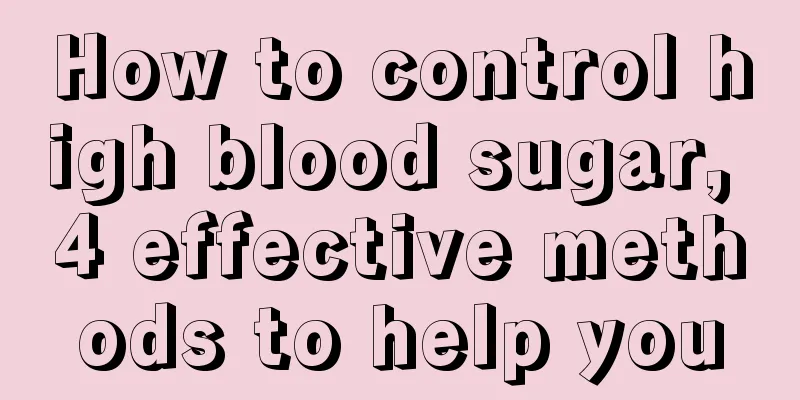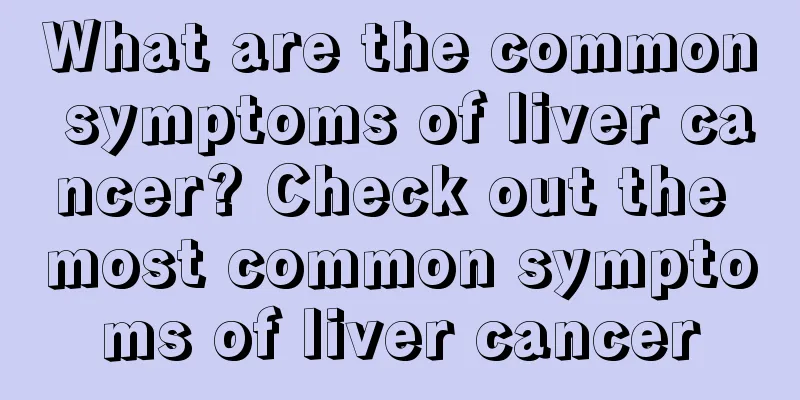How to control high blood sugar, 4 effective methods to help you

| Once the patient is found to have high blood sugar, active treatment and related control should be carried out. When it comes to controlling diet, changing it is the most common and effective method, such as appropriately reducing calorie intake, controlling the intake of high-sugar foods, etc.; in addition, increasing exercise is also an excellent way to control high blood sugar levels. 1. Eat less at the next meal, skip a snack, or switch to foods with a lower glycemic index (GI). For overweight type 2 diabetes patients, losing 5 to 10% of their body weight can significantly improve their blood sugar levels. Therefore, as long as you reduce your calorie intake appropriately, you can achieve better blood sugar control. The general experience is that reducing 15 grams of carbohydrates (equivalent to approximately 50 grams of rice or 30 grams of steamed bread, 150 grams of apples or pears, 400 milliliters of milk or 300 milliliters of sugar-free yogurt) can reduce blood sugar by approximately 1.7 mmol/L. For example, if your blood sugar level before a meal is 10.0mmol/L, you can eat one or two less bowls of rice and drink one less glass of milk during the meal, so that your blood sugar level can be closer to 6.6mmol/L. However, since everyone responds differently to this adjustment, this only provides a rough guideline for everyone to make dietary adjustments. In addition, choosing foods with a lower glycemic index (i.e. foods that do not cause a rapid or excessive increase in blood sugar) can also help keep blood sugar levels within target levels. Since the effect of a food on blood sugar varies from person to person, in order to find out how a certain food increases your blood sugar, it is necessary to measure your blood sugar several times for comparison. For example, if you want to know how oatmeal and whole-wheat crackers, which contain equal amounts of carbohydrates, affect your blood sugar, you would test your blood sugar levels before and two hours after eating each food, and then compare their ability to raise blood sugar. 2. Increase activity or do more exercise. People with type 2 diabetes generally get better blood sugar control by increasing exercise. Even simple exercise, such as walking for 20 minutes a day, can effectively improve insulin resistance and reduce weight as long as you stick to it. Studies have confirmed that through proper exercise, diabetic patients can indeed reduce the dosage of hypoglycemic drugs, and can even completely stop taking drug treatment. 3. Adjust medication (increase dosage, increase frequency of medication, or add another glucose-lowering drug). Although exercise and dietary adjustments are economical and have few side effects, when these practices cannot bring blood sugar to the ideal level, it indicates that it is necessary to adjust medication. Compared with the first two methods, medications can indeed treat high blood sugar faster and more effectively. If you are currently taking a low-dose oral medication, your doctor may recommend that you increase your dose or divide your once-a-day medication into two doses in the morning and evening. If the dosage is already very high, your doctor may give you another glucose-lowering drug. This also applies to patients taking insulin. One thing these patients need to understand is that increasing the number of injections per day does not necessarily mean that your condition will get worse. This is done to give you more flexibility to adjust your insulin dosage based on your blood sugar and eating and activity patterns. The general experience (note: insulin adjustment must be done under the guidance of a doctor) is: one unit of regular insulin can lower blood sugar by 1.7mmol/L. For example, if the blood sugar level before a meal is 10.7mmol/L, then adding 3 units of insulin on the original basis can reduce the blood sugar level to around 5.6mmol/L. However, diabetic patients should be especially reminded that this rule does not apply to patients who exercise regularly (because exercise can improve insulin sensitivity, the need for insulin will decrease) and patients who are sick (because insulin resistance increases, more insulin will be needed). When blood sugar levels are too high, the effectiveness of insulin will be significantly weakened. 4. Self-relaxation and emotional regulation Relaxation exercises (such as deep breathing, relaxing muscles with relaxing music, etc.) can help relieve stress and make hypoglycemic treatment more effective. Learning to regulate emotions and enhancing self-efficacy (people's subjective judgment on whether they can successfully perform a certain behavior) can help overcome negative mentalities such as fear and negativity after becoming ill, which will also help control blood sugar. |
>>: What is the best way to treat lumbar spinal stenosis? 6 major treatment methods
Recommend
Cishi and Job's tears
In the summer and autumn, there are a lot of wate...
How long does it usually take for stomach cancer to develop?
The formation of gastric cancer may take 10, 20 o...
Why does my hair become oily after a good night's sleep
Many people find that their hair is very greasy a...
What are the specific symptoms of advanced cardiac cancer
Cardiac cancer is the most common disease among m...
What are the causative factors of liver cancer? What are the principles of treating liver cancer?
Liver cancer is one of the most common malignant ...
The efficacy and function of red ginseng essence
Red ginseng essence can eliminate human fatigue i...
Can honey and white vinegar be used as facial masks?
Facial masks are very commonly used beauty and sk...
Key points for home care for colon cancer
In the treatment of colon cancer, colonoscopy and...
The difference between Chanel essence and perfume
There are certain differences between Chanel esse...
Does Diogenes syndrome occur more often in the elderly?
The elderly are old and weak, and are a group tha...
Can handstand help breast enlargement?
For women, fuller breasts can also make them more...
What are the early symptoms of prostate cancer
Prostate cancer is a common male disease. This di...
Analysis: Can testicular cancer be completely cured?
I believe that many testicular cancer patients wa...
Treatment of encephalitis
Society is progressing day by day, but the handli...
How to prevent liver cancer? 4 methods are recommended to prevent liver cancer
Liver cancer is a very difficult disease to contr...









